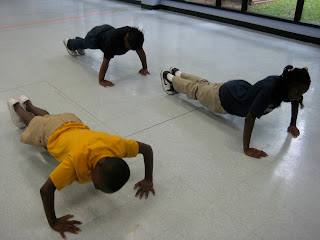Theme: How the World Works
Central Idea: Balance affects a variety of movements
Students will learn the importance of structure, balance and control through experience with pyramids and partner balances.
The following pictures display the expectations of the students during this unit which were to perform skills and concepts that related to balance, movement and control.
Each grade participated in age-appropriate activities that helped to develop the skills needed to successfully meet the Georgia Performance Standards.
Connection to Real World:
Each student was responsible for researching an Olympic gymnast from a country of their choice. The premise of the research was to help better their interview skills and also to heighten their interest in the sport of gymnastics. They created their own questions and then researched the answers to their questions. Once they completed their research, they represented that gymnast in a mock Olympic event where they created a routine that included five skills learned in the unit. This routine was judged for: form, control, flow, creativity and enthusiasm.
Collaboration with Colleagues:
I make a point to connect my lessons with what is being covered in all classrooms. This is indicated on my UOI. For this particular unit, we concentrated on how we balance and transfer our weight with the different movements we make. Doing this, helped me to introduce my next unit, which was the use of pedometers.



















